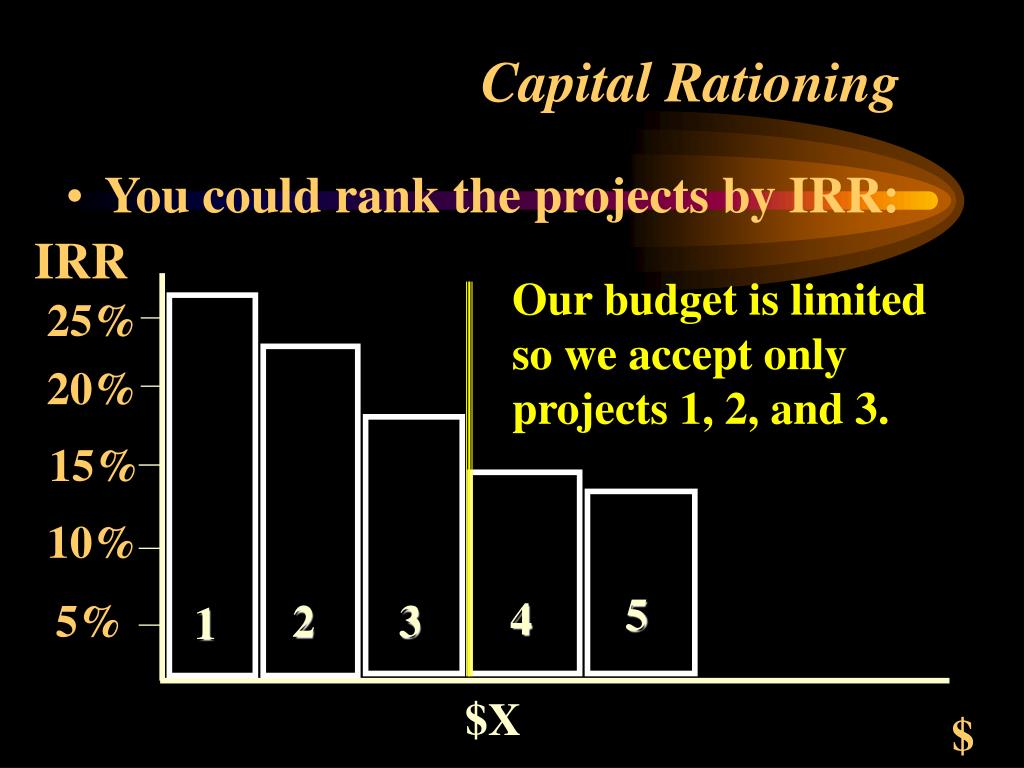
PPT Chapter 10 Cash Flows and Other Topics in Capital Budgeting PowerPoint Presentation ID
While hard rationing can be challenging for a business, it's sometimes unavoidable. Yet, soft rationing can be an excellent tool for financial management and strategy in a well-functioning market. Capital Rationing Process. In the capital rationing process, the first step is typically assessing whether there is a need to ration capital at all.

The Different Capital Budgeting Tools For Capital Rationing
Soft capital rationing, also known as internal rationing, is based on the internal policies of the company. A fiscally conservative company, for example, may require a particularly high.
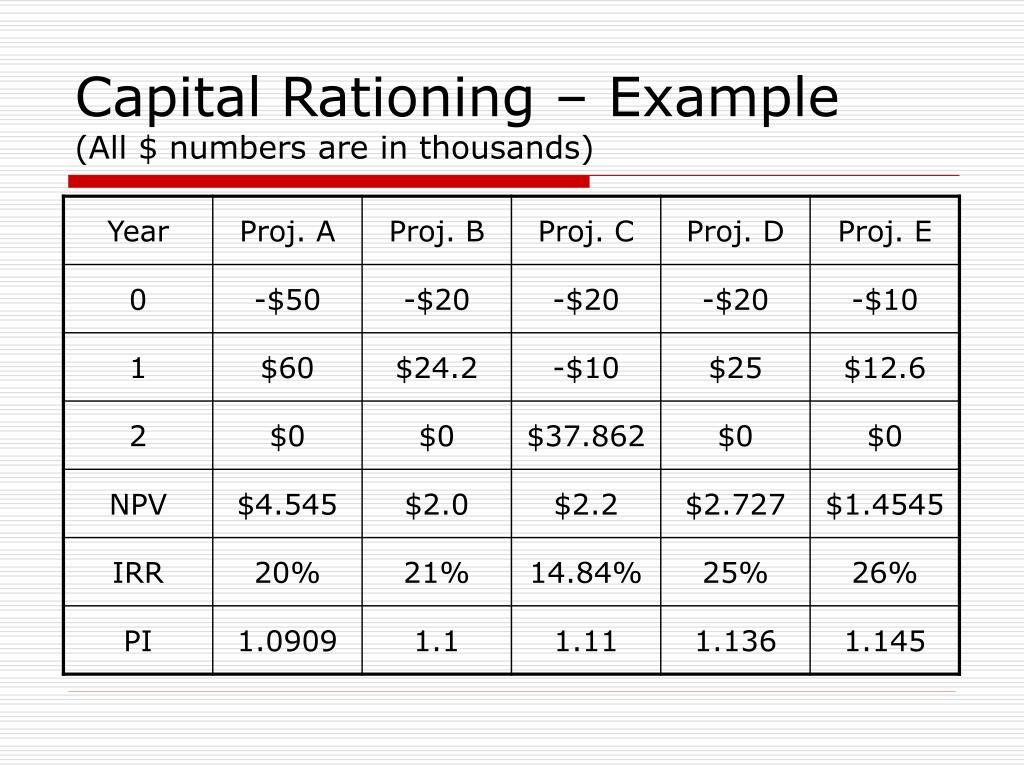
PPT Capital Budgeting PowerPoint Presentation, free download ID257260
What is Capital Rationing? Capital rationing is a part of the capital budgeting process of a company in which it places restrictions on the capital it uses for new projects or investments. Companies can also use capital rationing to limit the number of projects that they undertake at a single time.

PPT Capital Budgeting PowerPoint Presentation, free download ID503832
Soft rationing is when the practice of limiting the usage of capital funds for diverse projects by constraints set by management. Capital rationing is caused due any limitations imposed by the management or not having enough people or knowledge to complete all the projects.
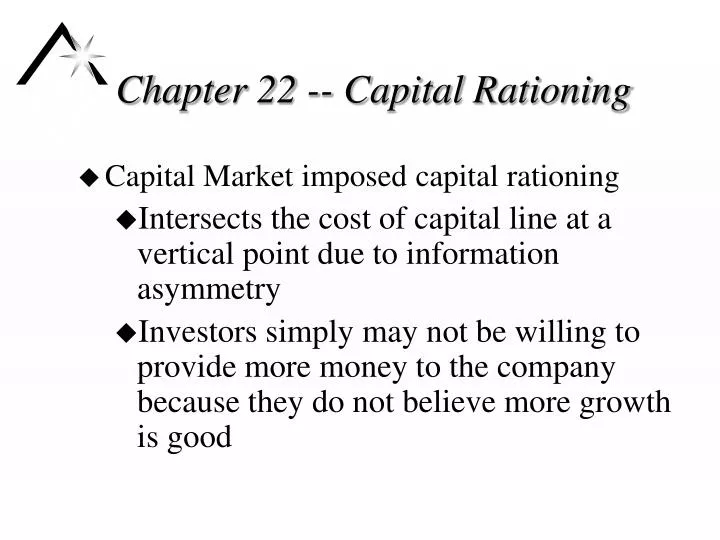
PPT Chapter 22 Capital Rationing PowerPoint Presentation, free download ID1807985
Soft Capital Rationing It is when the management imposes the restriction. Hard Capital Rationing It is when external sources limit the capital infusion. Also read Advantages and Disadvantages of Capital Rationing Capital Rationing Decisions These decisions are made by managers to attain the optimum utilization of the available capital.

Rationnement du capital Anne Marie
Rationing is the practice of controlling the distribution of a good or service in order to cope with scarcity. Rationing is a mandate of the government, at the local or federal level. It can be.

Capital Rationing Its Assumptions, Advantages and Disadvantages
Capital rationing can be hard (external) or soft (internal), driven by factors like difficulty raising funds or internal policies. While capital rationing offers benefits like efficient resource use, it may favor short-term profits over long-term growth and requires careful consideration of return rates. Understanding Capital Rationing

Capital Rationing A Complete Guide on Capital Rationing with Types
Soft rationing is when capital is restricted based on internal policies and limitations. What is Capital Rationing? Capital rationing is the deliberate restriction of capital.
:max_bytes(150000):strip_icc()/CapitalRationing-b258e8b984b94ab4b3906e65c4b4d79c.jpg)
What Is Capital Rationing? Uses, Types, and Examples
In contrast, soft capital rationing refers to a situation where a company has freely chosen to impose some restrictions on its capital expenditures, even though it may have the ability to make much higher capital investments than it chooses to. The company may choose from any of a number of methods for imposing investment restrictions on itself.
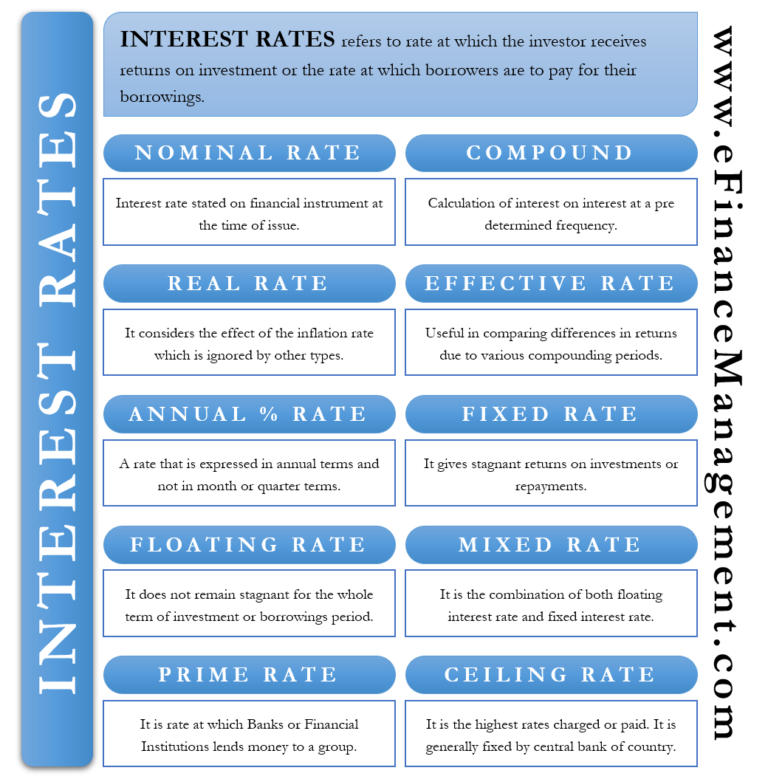
Types of Capital Rationing Hard and Soft
2. Soft Capital Rationing - In contrast, soft capital rationing arises from a company's self-imposed restrictions on capital expenditures.This type of rationing is driven by internal policies and considerations. For example, a financially conservative company may set a high hurdle rate, requiring a projected return on capital that surpasses a predetermined threshold before pursuing a project.
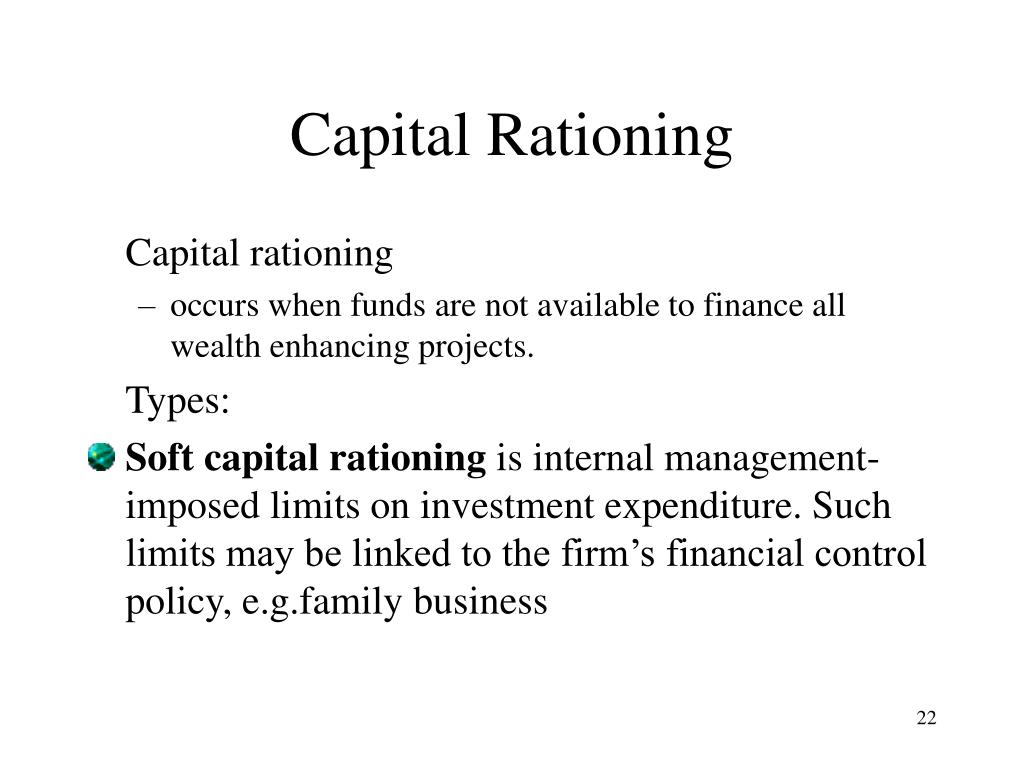
PPT Lecture 3Capital investment appraisal 2 Inflation, Taxation and capital rationing
Hard rationing occurs when there is no way to raise more capital. The capital budget cannot be increased in any way. Soft rationing occurs when departments within a company are able to increase their allocated capital budget if they can justify to company management that the additional resources will create shareholder value.

Capital Rationing AwesomeFinTech Blog
Soft capital rationing might also arise because managers wish to finance new investment from retained earnings, for example, as part of a policy of controlled organisational growth, rather than a sudden increase in size which might result from undertaking all investments with a positive net present value.

Capital Rationing, Managing, Types, and Impact
Reasons for Soft Capital Rationing Promoters' Decision An increase in Opportunity Cost of Capital Future Scenarios Single Period and Multi-Period Capital Rationing Conclusion On the other hand, soft capital rationing or "internal" rationing is caused due to the internal policies of the company.

PPT CHAPTER 10 The Basics of Capital Budgeting PowerPoint Presentation ID4687125
Soft capital rationing: A company may impose its own rationing on capital. This is contrary to the rational view of shareholder wealth maximisation. Reasons for hard or soft capital rationing. Single and multi-period capital rationing. Single-period capital rationing: Shortage of funds for this period only.
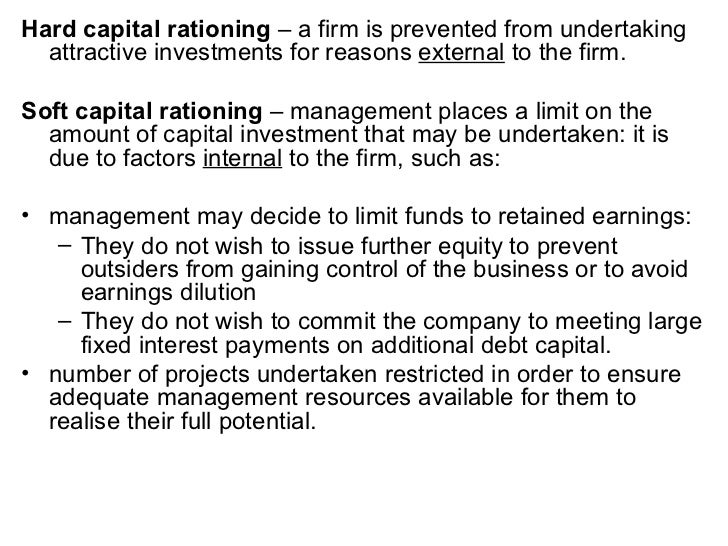
Capital budgeting
Soft capital rationing A company may impose its own rationing on capital. This is contrary to the rational view of shareholder wealth maximisation. Reasons for capital rationing Single and multi-period capital rationing Capital rationing can apply to a single period, or to multiple periods.

😱 Explain capital rationing. Capital Rationing (Meaning, Example). 20221026
Discuss the reasons why hard and soft capital rationing occur. (5 marks) The requirement provides a good illustration of the importance of ensuring that the question is being answered. It does not ask for an explanation of what hard and soft capital rationing are, but instead for the reasons why the different types of capital rationing occur.